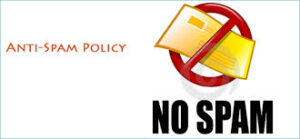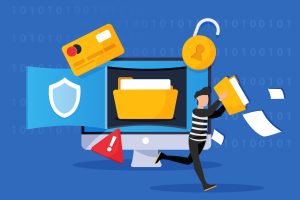In a world where remote work is becoming the norm, businesses enjoy increased flexibility, reduced operational costs, and access to global talent. However, with these advantages comes an undeniable challenge: securing email communication for remote teams. Email remains a critical tool for collaboration, yet it is also a prime target for cybercriminals. This blog will explore remote teams’ unique email security challenges and the solutions businesses can adopt to safeguard their communications.
RELATED: Easy-to-use Email Security Checklist and Guide
The Rise of Remote Work and Its Impact on Email Security
Remote work has fundamentally transformed how teams collaborate. While tools like video conferencing and project management software play a role, email remains the backbone of communication. However, the shift to remote work has created a dispersed workforce outside corporate networks’ controlled confines.
This shift has introduced several vulnerabilities:
- Insecure networks: Employees often use public Wi-Fi or home networks, which lack enterprise-grade security measures.
- Increased phishing attacks: Cybercriminals exploit the lack of face-to-face communication to send targeted phishing emails, impersonating colleagues or executives.
- Weak endpoint security: Personal devices used for work may not have adequate security software, making them easy targets for malware and ransomware.
- Lack of employee training: Remote employees may not be adequately trained to recognize modern email threats.
Top Challenges of Email Security for Remote Teams
1. Phishing Attacks
Phishing remains one of the most common and effective methods cybercriminals use to compromise email accounts. Remote employees are particularly vulnerable to these attacks due to:
- There is an absence of immediate support to verify suspicious emails.
- Sophisticated phishing techniques, such as personalized messages and legitimate-looking email domains.
2. Business Email Compromise (BEC)
BEC attacks involve fraudsters impersonating executives or trusted partners to trick employees into making financial transactions or sharing sensitive information. These attacks have become increasingly common as remote work limits in-person verification.
3. Malware and Ransomware
Malware delivered through malicious email attachments or links can encrypt files or steal sensitive data. Remote devices often lack robust endpoint protection, making them easy prey for such threats.
4. Data Leakage
Email is a convenient medium for sharing sensitive business information. However, the risk of accidental or intentional data leakage increases when employees use personal email accounts or unsecured devices.
5. Weak Passwords and Credential Theft
Remote workers frequently use weak passwords or reuse passwords across multiple accounts. This opens the door for credential theft, allowing attackers to access email accounts and compromise entire systems.
Solutions to Email Security Challenges
1. Implement Advanced Email Security Solutions
Invest in enterprise-grade email security platforms that provide:
- AI-powered phishing detection: Identify and block phishing attempts before they reach employees’ inboxes.
- Real-time threat monitoring: Detect suspicious behavior or unauthorized access to email accounts.
- Attachment and link scanning: Analyze email attachments and URLs for malware.
Solutions like MailSafi offer comprehensive email security tailored to remote teams, ensuring your business stays ahead of evolving threats.
2. Enforce Multi-Factor Authentication (MFA)
MFA adds an extra layer of security by requiring employees to verify their identity through a second factor, such as a mobile app or biometric scan. Even if passwords are compromised, MFA prevents unauthorized access.
3. Train Employees on Email Security
Employee awareness is a critical defense against email threats. Conduct regular training sessions to teach employees how to:
- Identify phishing emails.
- Report suspicious emails to the IT team.
- Use secure practices when working on public Wi-Fi or personal devices.
4. Use Virtual Private Networks (VPNs)
A VPN encrypts internet traffic, ensuring secure communication between employees and corporate email servers, even on public Wi-Fi networks.
5. Establish Strong Email Policies
Define clear policies for email usage, including:
- Mandatory use of corporate email accounts for work-related communication.
- Prohibition of sharing sensitive information over email without encryption.
- Regular password updates and adherence to password complexity requirements.
6. Secure Endpoints
Equip remote employees’ devices with antivirus software, firewalls, and regular security updates. Encourage the use of company-issued devices rather than personal ones for work purposes.
7. Backup Critical Emails
Implement automatic email backup solutions to protect against data loss caused by ransomware attacks or accidental deletions. Regular backups ensure you can recover critical business information when needed.
The Future of Email Security for Remote Teams
As remote work becomes a permanent fixture, businesses must evolve their email security strategies. Emerging trends include:
- AI-driven threat intelligence: Predict and prevent emerging threats through advanced AI models.
- Zero Trust Architecture: Verify every email interaction regardless of location or device.
- Integration with collaboration tools: Secure emails within broader workflows involving tools like Slack, Teams, and Trello.
READ ALSO: What is Email Security?
Conclusion
Email security is no longer optional but necessary, especially for remote teams. Businesses can protect their communications, data, and reputation by understanding remote work’s unique challenges and adopting robust solutions.
Secure your remote team’s email today. Explore solutions like MailSafi, which offers state-of-the-art email security tailored to meet the demands of a remote workforce. Contact us at +254 728-999222 to learn more.
![]()




